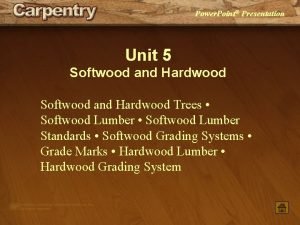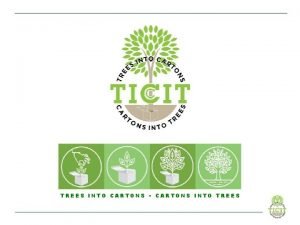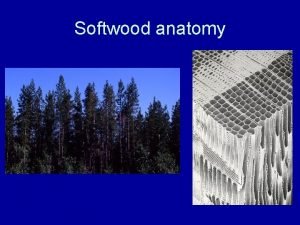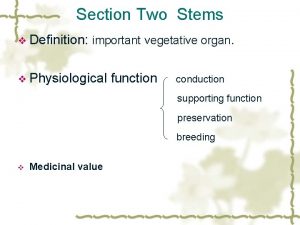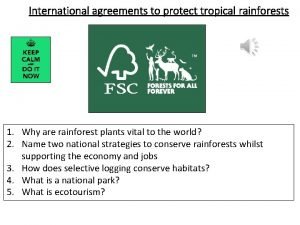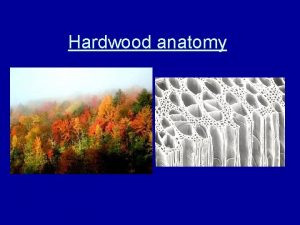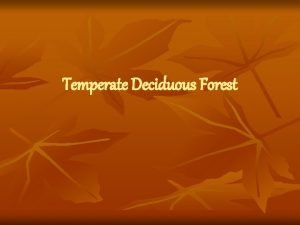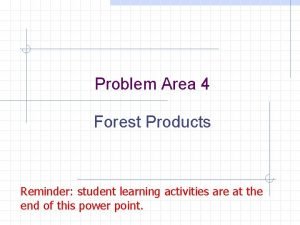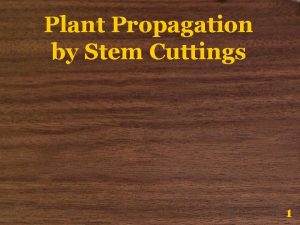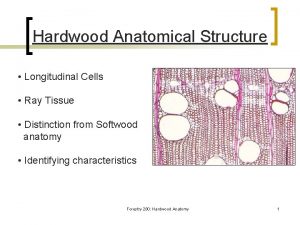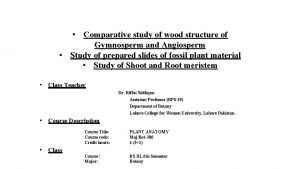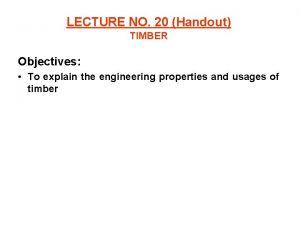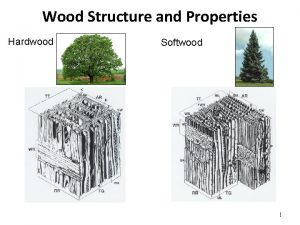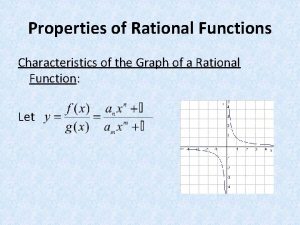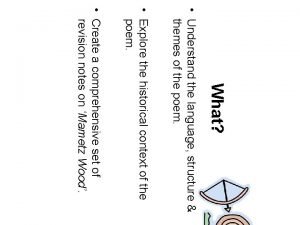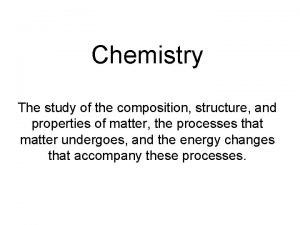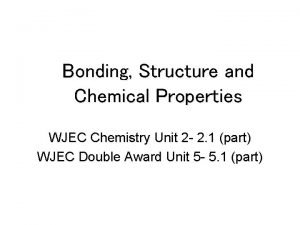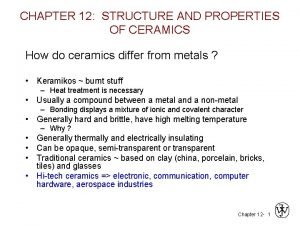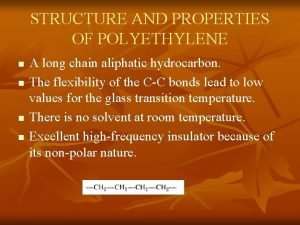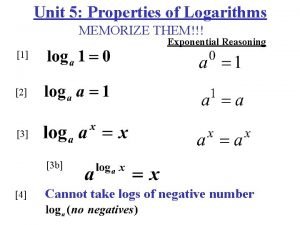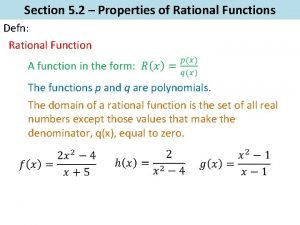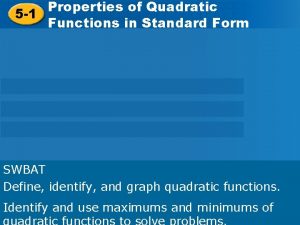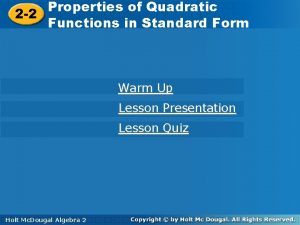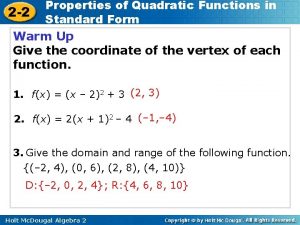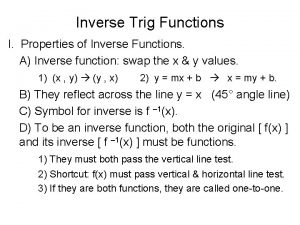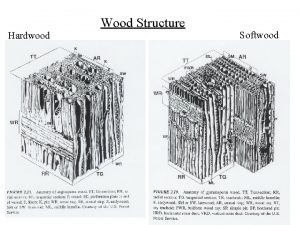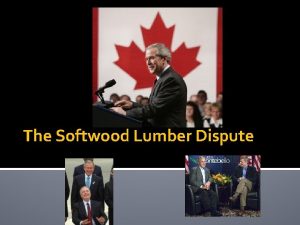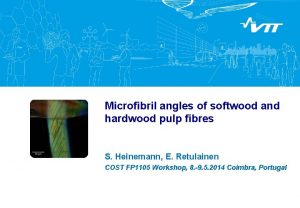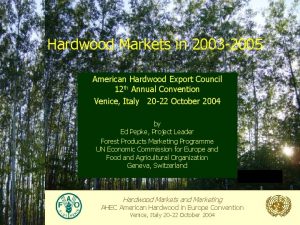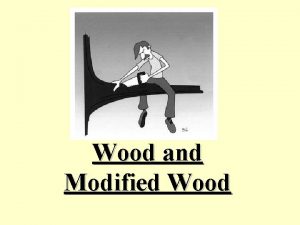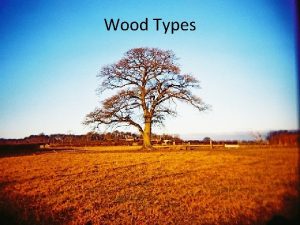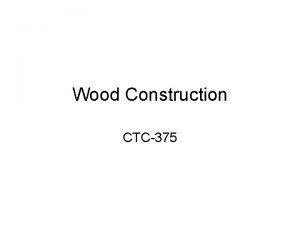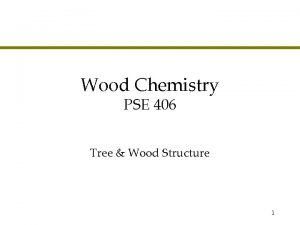Wood Structure and Properties Hardwood Softwood 1 Functions

































- Slides: 33

Wood Structure and Properties Hardwood Softwood 1

Functions of wood Outer bark Inner bark Cambium Sapwood Heartwood

Levels of scale in wood structure Molecular Ultrastructural Microscopic Macroscopic

Biodegradability Conditions necessary for fungal decay of wood. • • Oxygen Water Temperature range Nutrition source

Fungal hyphae Decay in the forest Decay at soil interface Decay in interior service

Fence post (preservative treated wood) • • Fence panel (Western red cedar) Oxygen Water Temperature range Nutrition source

Variability in wood products frequency Solid wood strength 7

Variability in wood products mean frequency lower 5 th percentile Solid wood ÷ safety factors allowable design stress strength 8

Variability in wood products mean frequency lower 5 th percentile ÷ safety factors Solid wood lower 5 th percentile Wood composite ÷ safety factors allowable design stress strength 9

Specific strength / Specific stiffness

Specific strength / Specific stiffness

Workability

Workability

Aesthetics / Psychological appeal

Bouyancy • Cell wall • Air • Water 1500 kg/m 3 1000 kg/m 3

Density of wood species (g/cm 3) Softwoods 1. 3 1. 2 1. 1 1. 0 Rosewood 0. 9 0. 8 0. 7 Southern yellow pine Douglas-fir Hemlock Lodgepole pine Spruce Western red cedar Lignumvitae 0. 6 0. 5 Hardwoods Padauk Hickory Oak Teak Maple Walnut Cherry 0. 4 0. 3 Basswood Cottonwood 0. 2 0. 1 0. 0 Balsa Domestic species Exotic species

Increasing moisture content Increasing density

Anisotropy (St. Regis Paper Co. ) (Indospectrum. com) (Côté) 18

Anisotropy Parallel to grain Perpendicular to grain

Anisotropy – perpendicular to grain Radial Tangential

Anisotropy – varies by property Longitudinal Radial Relative strengths Longitudinal 5. 0 Tangential 1. 1 Radial 1. 0 Tangential Relative permeability Longitudinal 100 Tangential 1 Radial 1

Hygroscopicity H Hydrogen Bond O H Water H O H

Wood Hygroscopicity H Hydrogen Bond O H O H

Water in cell wall H H O O O HH H O H H H O O H O H O H H H O H O O H H

Water in wood Cell wall Oven dry 0% m. c. Cell lumen Bound water 0 – 30% m. c. Free water > Fibre saturation point > 30% m. c.

Water content of wood Oven-Dry Fibre Saturation Point “Green”

Effect of moisture content on wood properties Fibre Saturation Point

Warping Wood can become bent or twisted out of shape as it dries below fibre saturation point. Natural shrinkage in combination with other factors such as anisotropy, spiral grain, and differential longitudinal shrinkage.

Combustibility

Sawmill residues Sawdust Chips Hog fuel

Wood pellets

Comparative Environmental Impact Assessment Life Cycle Analysis Canadian Wood Council 32

Comparative Environmental Impact Assessment Canadian Wood Council 33
 Hardwood and softwood ppt
Hardwood and softwood ppt Hardwood and softwood trees
Hardwood and softwood trees Fusiform rays
Fusiform rays V
V What are international hardwood agreements
What are international hardwood agreements Hardwood anatomy
Hardwood anatomy Temperate deciduous forest locations
Temperate deciduous forest locations Characteristics of softwood
Characteristics of softwood Cutting plants meaning
Cutting plants meaning Softwood anatomy
Softwood anatomy Gymnosperm structure
Gymnosperm structure Wood sawed wood old tongue twister
Wood sawed wood old tongue twister Wood wood teenager
Wood wood teenager Properties of wood
Properties of wood Physical properties of wood
Physical properties of wood Functions of wood
Functions of wood Extensive vs intensive properties
Extensive vs intensive properties Chemical property of water
Chemical property of water Rational functions characteristics
Rational functions characteristics Structure of mametz wood
Structure of mametz wood Evaluating functions
Evaluating functions Evaluating functions and operations on functions
Evaluating functions and operations on functions Atomic structure and properties ap chemistry
Atomic structure and properties ap chemistry The study of composition structure and properties
The study of composition structure and properties Bonding structure and properties wjec
Bonding structure and properties wjec Structure and properties of ceramics
Structure and properties of ceramics Properties of polyethylene
Properties of polyethylene Unit 7 lesson 4 properties of logarithms
Unit 7 lesson 4 properties of logarithms Properties of rational function
Properties of rational function Properties of quadratic functions
Properties of quadratic functions How to find minimum of a quadratic function
How to find minimum of a quadratic function Standard form properties
Standard form properties Properties of quadratic functions
Properties of quadratic functions Properties of inverse trigonometric functions
Properties of inverse trigonometric functions
